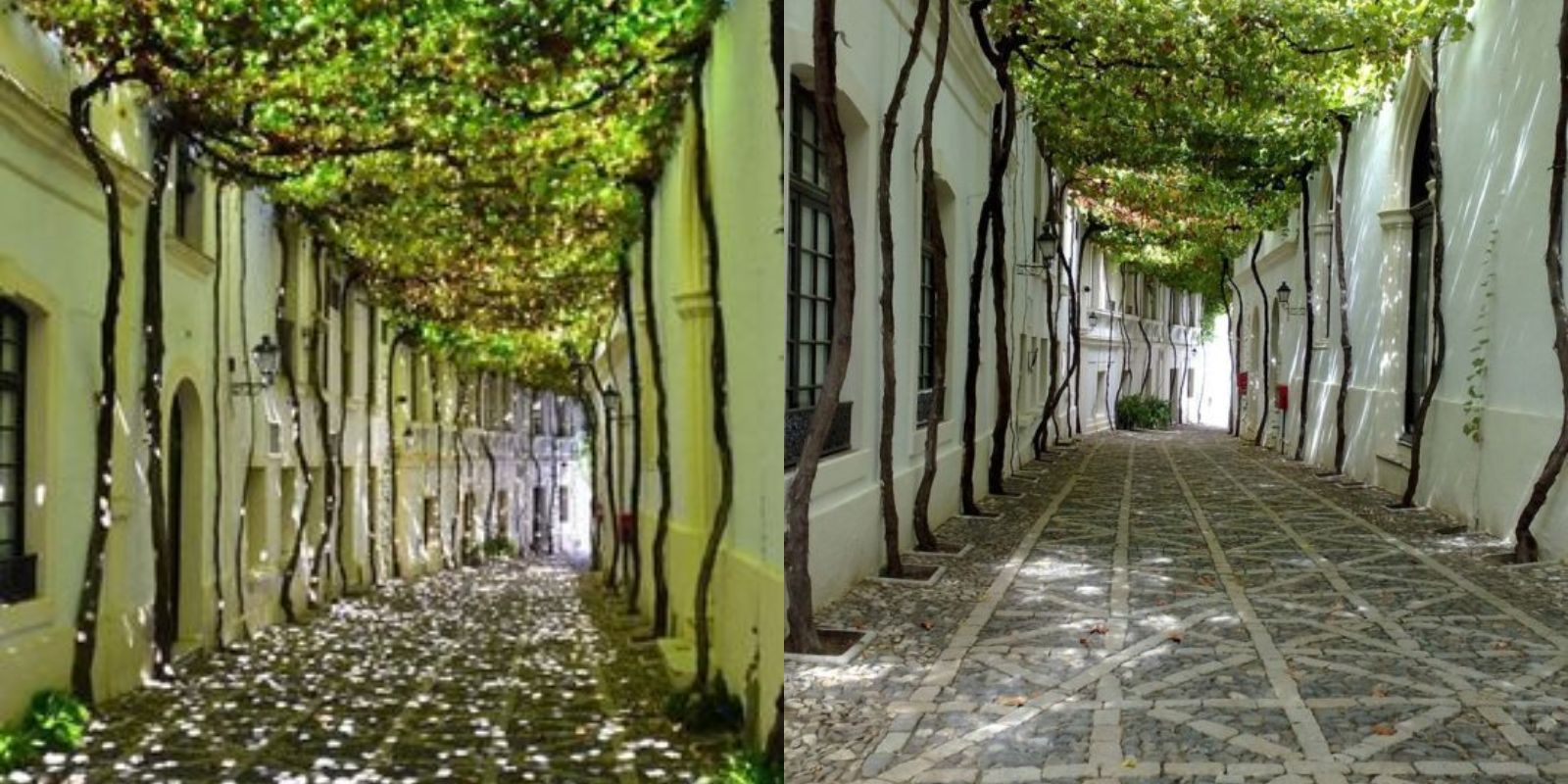Jerez de la Frontera, a historic city in southern Spain, is renowned for its sherry wine, flamenco, and Andalusian horses. However, during the sweltering summer months, the city’s narrow streets can become unbearably hot. In response to the extreme heat, the locals have developed an ingenious and aesthetically pleasing solution: natural shade canopies. These canopies, spanning between buildings, create cooler, more comfortable environments for residents and visitors. This article explores the cultural, environmental, and practical aspects of these natural shade canopies and how they transform Jerez’s urban landscape.
The Need for Cooling Solutions
Jerez experiences a Mediterranean climate, characterized by hot, dry summers and mild winters. Summer temperatures can often exceed 40°C (104°F), making outdoor activities challenging and even dangerous during peak heat periods. The city’s traditional architecture, with narrow streets and closely packed buildings, exacerbates the heat retention, creating urban heat islands. This phenomenon leads to higher temperatures in urban areas compared to their rural surroundings.
To combat this, the residents of Jerez have long employed various cooling techniques, such as whitewashing buildings to reflect sunlight and planting greenery to provide shade. Among these methods, the use of natural shade canopies has gained popularity for its effectiveness and cultural appeal.
Creating Natural Shade Canopies
Natural shade canopies are typically installed by stretching materials across the streets, anchored between buildings. These materials can include light, breathable fabrics, bamboo, or other natural materials. The process of creating these canopies involves several key steps:
- Installing Support Structures: To set up a shade canopy, sturdy support structures must first be installed. This usually involves erecting poles, beams, or hooks on opposite buildings to hold the canopy material in place. The choice of support depends on the distance between buildings and the weight of the canopy.
- Choosing Shade Material: The choice of material is crucial for the effectiveness of the canopy. In Jerez, lightweight fabrics are commonly used, as they allow for some air circulation while blocking a significant portion of the sun’s rays. Natural materials like bamboo or reed mats are also popular, providing a more traditional and rustic appearance.
- Securing the Canopy: The canopy material is then stretched across the support structures and securely fastened. It is important that the canopy is taut to prevent it from sagging or being torn by wind. Proper tension also ensures that the canopy remains stable and provides consistent shade.
- Decoration and Maintenance: To enhance the aesthetic appeal, canopies are often decorated with local artwork, colorful patterns, or even hanging plants. Regular maintenance is necessary to ensure the longevity of the canopies, which involves checking for wear and tear, securing fastenings, and replacing any damaged sections.
Cultural and Aesthetic Significance
In addition to providing practical cooling benefits, natural shade canopies contribute to the cultural and aesthetic charm of Jerez. The canopies often reflect the local culture, featuring designs and decorations that celebrate Andalusian traditions. During festivals and events, these canopies are adorned with vibrant colors and patterns, adding to the festive atmosphere.
Moreover, the canopies enhance the visual appeal of the streets, creating a cozy and inviting environment. The interplay of light and shadow beneath the canopies can be particularly enchanting, offering a respite from the intense sunlight and encouraging social interaction in public spaces.
Environmental and Economic Benefits
The implementation of natural shade canopies offers several environmental and economic benefits. Firstly, by reducing the temperature in urban areas, these canopies decrease the demand for air conditioning, leading to lower energy consumption and reduced greenhouse gas emissions. This contributes to Jerez’s efforts to combat climate change and promotes sustainable urban living.
Economically, the canopies attract tourists and enhance the local economy. The shaded, cooler streets make the city more appealing to visitors, who are more likely to explore, shop, and dine in comfort. The increased foot traffic benefits local businesses and contributes to the vibrancy of the city’s commercial districts.
Challenges and Considerations
While natural shade canopies offer many benefits, they also present certain challenges and considerations. The installation and maintenance of these structures require coordination and cooperation among local authorities, businesses, and residents. Funding and resources are needed to purchase materials, set up the canopies, and maintain them over time.
There is also the need to balance aesthetic and practical considerations. The canopies must be effective in providing shade without obstructing views or access. Additionally, they need to be durable enough to withstand weather conditions, such as strong winds or heavy rain, without causing damage to buildings or posing safety risks.
Conclusion
Natural shade canopies are a beautiful and practical solution to the intense heat of Jerez’s summer months. They reflect the city’s cultural heritage, enhance the urban environment, and offer a cooler, more comfortable experience for residents and visitors alike. These canopies are a testament to the innovative and community-driven approaches to urban living that define Jerez.
As cities around the world grapple with the challenges of climate change and urban heat islands, the example set by Jerez’s shade canopies offers valuable insights. By combining traditional knowledge with modern needs, cities can create livable, sustainable environments that celebrate their unique identities.
Have you experienced the cooling benefits of shade canopies in Jerez or other cities? Share your experiences or thoughts on this innovative solution below! Let’s discuss how urban design can improve our quality of life.

